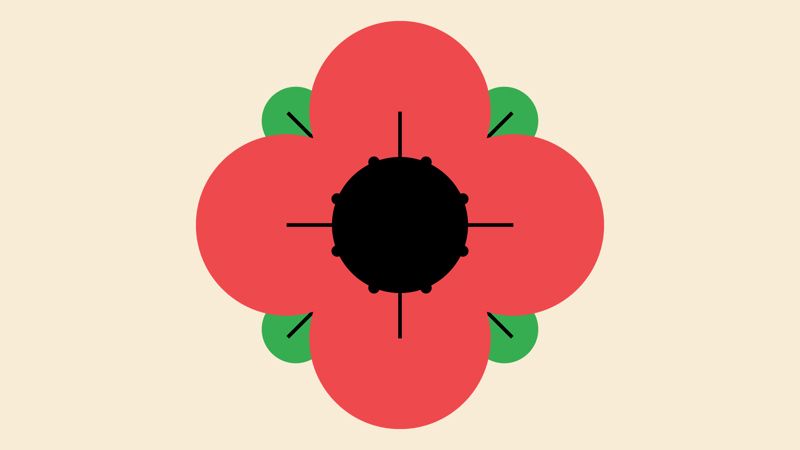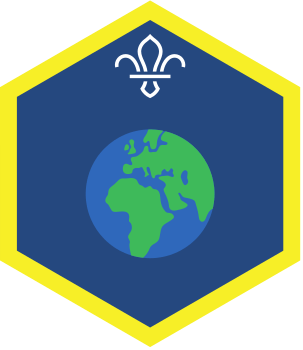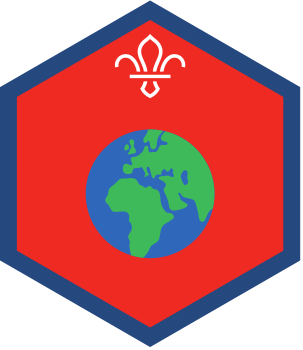
A virtual Remembrance reflection
Remembrance honours people who serve to defend our democratic freedom and way of life. We unite across faiths, cultures and backgrounds to remember the service and sacrifice of the Armed Forces community from the United Kingdom and the Commonwealth. We will remember them.
- We remember the sacrifice of the Armed Forces community from the United Kingdom and the Commonwealth.
- We pay tribute to the special contribution of families and of the emergency services.
- We acknowledge innocent civilians who’ve lost their lives in conflict and acts of terrorism.
Remembrance doesn’t glorify war and its symbol, the red poppy, is a sign of both Remembrance and hope for a peaceful future. Wearing a poppy isn’t compulsory but it’s greatly appreciated by those who it’s intended to support. When and how you choose to wear a poppy reflects your individual experiences and personal memories.
Remembrance unites people of all faiths, cultures and backgrounds, but it’s also deeply personal. It could mean wearing a poppy in November, joining with others in your community on a commemorative anniversary, or taking a moment on your own to pause and reflect. Everyone’s free to remember in their own way or to choose not to remember at all.
- Armistice Day is the 11 November. It marks the armistice agreement that bought an end to the fighting of the first world war.
- People pause at 11am on the 11 November to remember service and sacrifice past and present.
- The national service of Remembrance happens on the closest Sunday to 11 November, which is known as Remembrance Sunday. Each year people gather at the Cenotaph in London and other memorial sites.
- We call the whole period around these dates Remembrance. There are many ways to take part in Remembrance.
In 2022, the Royal British Legion remembers the Service of those who work to protect us and our ways of life. Whether in the Armed Forces, Emergency or Civilian Services, past or present, we remember who has served, how they served and why it’s important that we continue to remember them.
Before you begin
- Use the safety checklist to help you plan and risk assess your activity. Additional help to carry out your risk assessment, including examples can be found here. Don’t forget to make sure all young people and adults involved in the activity know how to take part safely.
- Make sure you’ll have enough adult helpers. You may need some parents and carers to help if you’re short on helpers.
Getting ready for the event
- You could do this event in person or online.
- You may want to approach local branches of the Royal British Legion to join you or provide speakers.
- You could create artwork in an earlier session to display in this event or have in the background of an online meeting.
- Take a look at our event planning and safety guidance for running an in-person event.
- Think about how you’ll run the event. We’ve included some suggestions but it’s up to you how much you want to adapt them for your group. It’s a good idea to read through the information before you begin so you’re prepared.
Reflecting on Remembrance
Most groups are invited to their local places of worship for Remembrance, but you may like to hold your own reflection event. Below are a number of ideas you can use to hold your own event, adapt them so they work for your group – you may have your own poem to read, a visitor to invite, or some important local context to add. The instructions are a starting point for you to create an event that works for you.
Hold your own Remembrance event
- The person leading the event should welcome everyone to the event
- Start the session by reminding the group of the significance of Armistice Day and Remembrance Sunday. Everyone could talk about the days and how they may have marked them in the past.
-
The person leading the activity could ask if anyone's seen poppies, or pictures of poppies, around in November. Some people may have seen them for sale or bought them. Some people may be wearing one at the event.
- Everyone could take it in turns to explain what they know about poppies and why they’re worn around Remembrance. It’s a good idea to ask people to put their hands up and not shout out so everyone gets a turn.
- The person leading the activity could explain that in the UK, people wear poppies in November for two reasons. On his to remember those who have served and sacrificed to protect us and the other is as a sign of hope for a peaceful future. The poppy was chosen because at the end of the first world war, poppies began to grow in the fields in Western Europe where the fighting happened.
- Poppies inspired Lieutenant Colonel John McCrae to write the poem In Flanders Fields. If you want to, you could read some of it out loud (or ask someone to read some of it out loud). There’s some more information and a link below.
- We often use symbols to represent our thoughts. If you want to, you could ask if anyone knows of any other symbols that represent something important. For many people, poppies are a reminder to take time to remember and be thankful for people who made sacrifices to keep us safe.
- The person leading the activity could share a bit more about who’s remembered in Remembrance. They may tell people about the Scouts Roll of Honour or Scouts’ heritage collections or they may talk about some of the wars since the second world war.
- If you’ve invited a guest to speak to the group, now is a great time to ask them to share some information.
- The person leading the activity could ask everyone what remembrance means to them. Everyone will have their own view and experience of what remembrance means. Some people may have family members who serve in the armed forces today.
- Everyone could think about who they’re grateful to this Remembrance. Anyone who’s comfortable could share some of their thoughts with the group, or everyone could write their ideas down and add them to a display.
- The person leading the activity could explain that there are lots of different ways to mark Remembrance. Many people take part in a two-minute silence at 11am on 11 November. Pausing and being silent for two minutes is a way to show respect and gratitude. It also lets people take time to think about the people Remembrance commemorates.
- The person leading the activity could show the Royal British Legion’s video Pause, which shows why the two-minute silence is important and what it means to us today.
- Once the video has finished, everyone should share a moment of silence together. It’s up to you how you start this – it may be nice to give everyone something to reflect on. You could ask someone to read the words below or share the ‘Thoughts from Baden Powell’.
- After the silence, someone could make another reading. We’ve included some ideas below.
- Finally, the person leading the activity could leave some time to chat about everything people have discussed.
- When finished, the event organiser(s) should thank everyone for joining.
To watch in full screen, double click the video
- We remember people who've served and sacrificed in conflicts and emergencies.
- We remember those who've served since the First World War.
- We remember the service and sacrifice of the Armed Forces from across the United Kingdom and the Commonwealth.
- We remember people who supported them, including people who worked in munitions factories, people of the resistance, and people, especially women in the 1900s, who took on jobs to keep their country running.
- We remember families who've lost loved ones or who're caring for injured and recovering veterans.
- We remember the Emergency Services, who often serve alongside the Armed Forces.
- We remember civilians, who've lost their lives in conflict. These are people, who're not members of the armed forces, but have lost their lives as a result of war and terrorism.
As we remember, we can also think about the tens of thousands of Scouts who served in both world wars. Many Scouts served on the fighting fronts and many more carried out vital functions at home. Scouts were coast watchers, messengers and first aiders.
Scout adult volunteers served in the Scout International Relief Service during the last few months of the second world war. They brought aid and comfort to displaced people, refugees and survivors of the concentration camps.
They knew that they were doing their best to help, even if they couldn’t always fix the bigger issues. As one member said: ‘We can’t do much, but it’s better than doing nothing’.
Visit out our Remembrance Day pages for some more stories of Scouts helping during the wars and some other activities to explore the topic.
Scouts responded and made big sacrifices in both world wars. The Scouts Rolls of Honour lists the names of all former Scouts and Scout volunteers who were killed during the first and second world wars.
You can look on The Scouts Roll of Honour to see if any Scouts or volunteers from your area were killed during the world wars.
You could also find out where your local war memorial or roll of honour is. Are any of the Scouts mentioned on them? Some places have specific memorials to Scouts, too.
In 1928, Baden Powell summarised why it is important for us, as Scouts, to observe Remembrance Day with a shared moment of silence.
"When we observe the silence, what shall we ask of ourselves in those solemn moments of thought? Could it not be to think out and resolve that in our turn we shall see with a new outlook and henceforth do, each of us, our bit to bring about peace and goodwill in world affairs? In the Scout Movement we are trying to do our little bit in this direction, by bringing together in friendship and under common ideals the future generation of every country in the world."
He was talking about what people could think about during the two-minute silence and said that people could reflect on how they could play their part in bringing about peace. In Scouts, people do their bit to get this started by building a worldwide movement that shares the same values.
It’s up to you how you’ll introduce your moment of silence. You could say something, for example: "We’ll now spend two minutes thinking about everyone who’s made sacrifices or died because of war. I hope we can reflect quietly together."
You could also invite someone to read a reminder of who you’re remembering, for example: "We remember and thank people who’ve fought and died in war. We remember and thank all those who rebuild after war. We remember and thank all those who serve today. We’re grateful to everyone who’s served and made sacrifices for the greater good."
There are a number of other readings you could use or share including For the Fallen by Laurence Binyon and A Scout in Flanders, by H.E.
Safety
All activities must be safely managed. You must complete a thorough risk assessment and take appropriate steps to reduce risk. Use the safety checklist to help you plan and risk assess your activity. Always get approval for the activity, and have suitable supervision and an InTouch process.
- Online safety
Supervise young people when they’re online and give them advice about staying safe. Take a look at our online safety or bullying guidance. The NSPCC offers more advice and guidance, too. If you want to know more about specific social networks and games, Childnet has information and safety tips for apps. You can also report anything that’s worried you online to the Child Exploitation and Online Protection Command. As always, if you’ve got concerns about a young person’s welfare, including their online experiences, follow the Yellow Card to make a report.
- Visits away from your meeting place
Complete a thorough risk assessment and include hazards, such as roads, woodland, plants, animals, and bodies of water (for example, rivers, ponds, lakes, and seas). You’ll probably need more adult helpers than usual. Your risk assessment should include how many adults you need. The young people to adult ratios are a minimum requirement. When you do your risk assessment, you might decide that you need more adults than the ratio specifies. Think about extra equipment that you may need to take with you, such as high visibility clothing, a first aid kit, water, and waterproofs. Throughout the activity, watch out for changes in the weather and do regular headcounts.
Let everyone know what you’ve planned before the session – you could ask people to volunteer to read during your reflection.
Some people may want to write a poem or reflection of their own to share with the group.
You should chat to anyone who’s likely to find a silence difficult – how can you make it accessible for them? C
Maybe they’d like to focus on something like a poem or get stuck into a remembrance themed craft to keep their hands, and perhaps their mind, busy.
Different people reflect and show respect in different ways, so chat to people, and their parents and carers, to find something that'll work for them.
All Scout activities should be inclusive and accessible.
Why not work on some crafts together in another session to reflect more on the theme of Remembrance? You could try crafting Paracord poppies, painting a Pebble to remember, or try some Wartime weaving.


